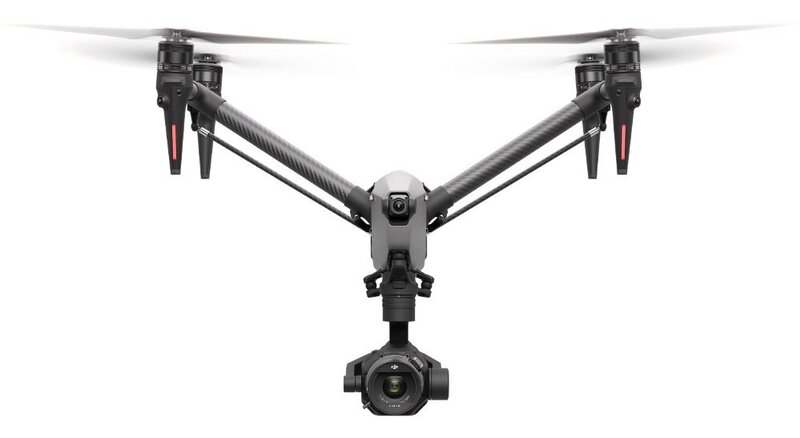Drones: Innovation in aerial filming
CineMPC | Researchers develop a drone designed to meet the needs of film directors.
CineMPC | Researchers develop a drone designed to meet the needs of film directors.
The film industry is constantly evolving, driven by technological advances that make it possible to capture images in ways never seen before.
The integration of drones in aerial filming has transformed the way dynamic shots are captured, offering innovative perspectives and reducing production costs. From advanced control systems to artificial intelligence applied to cinematography, innovation continues to shape the future of the industry.
Drones have moved from being a complementary tool to becoming a cornerstone in audiovisual production.
Initially used to replace helicopters for aerial shots, drones have now evolved with advanced stabilisation systems, high-resolution cameras and extended flight autonomy, allowing filmmakers to capture scenes with greater precision and creativity.
Innovation in aerial cinematography has been driven by multiple technologies, including:
Ultra-high-definition cameras such as the RED Komodo 6K and ARRI Alexa Mini, which deliver cinematic quality.
Advanced stabilisation systems like three-axis gimbals (DJI Ronin 2, Freefly MoVI Pro), which reduce vibrations and ensure smooth shots.
AI-powered drones with predictive control, capable of autonomously tracking moving subjects and optimising composition in real time.
Modular platforms, which allow filmmakers to customise and adapt different camera types and configurations to meet the specific needs of each production.


One of the latest developments in aerial filming innovation is CineMPC, an autonomous system developed by researchers at the University of Zaragoza and Stanford University.
This system enables a drone to control not only its position and orientation, but also the internal camera parameters such as focal distance and aperture.
Unlike other drones that require manual adjustments by an operator, CineMPC automates the process through artificial intelligence and a model predictive control (MPC) system. This allows dynamic shots to be captured without human intervention, streamlining filming times and enhancing the quality of the audiovisual material.
In the film industry, there are various tools for capturing high-quality aerial footage.
Some drones, like the DJI Inspire 3 and the Freefly Alta 8, have been widely used in audiovisual production thanks to their advanced features.
DJI Inspire 3:
This drone is designed to strike a balance between image quality, stability and filming flexibility. It allows operators to manually control recording with an interchangeable camera capable of shooting in 8K, delivering exceptional cinematic quality. Its advanced stabilisation system and sensors ensure smooth and precise filming.
Freefly Alta 8:
A robust option for film productions that require heavy camera rigs. Its modular system allows for the mounting of large-format cinema cameras and custom gimbals, making it an essential tool for capturing complex and high-quality aerial shots.
CineMPC:
This system introduces an automated approach by controlling not only the drone’s position and orientation, but also the internal camera parameters. Integrated with artificial intelligence and a model predictive control (MPC) system, it can adapt in real time to focus, depth of field and focal length without human intervention. This offers greater flexibility for capturing dynamic scenes.
While the DJI Inspire 3 and Freefly Alta 8 provide a high level of manual control for experienced operators, CineMPC automates many of these functions. This can be an advantage in productions that aim to optimise recording times and reduce the need for direct operator input.



Trends in aerial filming continue to evolve, and the future points towards:
Drones with machine learning capabilities, able to analyse scenes and adjust composition in real time.
Hybrid flight systems that combine the stability of drones with the agility of skilled pilots.
Integration with augmented reality and real-time visual effects, enhancing post-production and expanding the boundaries of cinematic creativity.
Innovation in aerial cinematography is transforming the way audiovisual productions are made.
From the development of more advanced drones to fully autonomous systems like CineMPC, filmmakers today have more tools than ever to take their creativity to the next level. As these technologies continue to evolve, the film industry will keep exploring new ways to capture stunning visuals and revolutionise visual storytelling.
The future of aerial filming is still evolving, with multiple innovative solutions to meet every need.
Servicio de drones con DJI Mavic 2
Servicio profesional con DJI Inspire 2
La Palma
Tenerife
Gran Canaria
Lanzarote
Fuerteventura
La Gomera
El Hierro
© 2021 BeeDronRecord. Todos los derechos reservados. Políticas de privacidad- Términos y condiciones
Utilizamos cookies propias y de terceros para mejorar tu experiencia de navegación, analizar el tráfico y personalizar el contenido y la publicidad. Puedes aceptar todas las cookies, rechazarlas o configurar tus preferencias en cualquier momento. Para más información consulta nuestra Política de Cookies. Read More